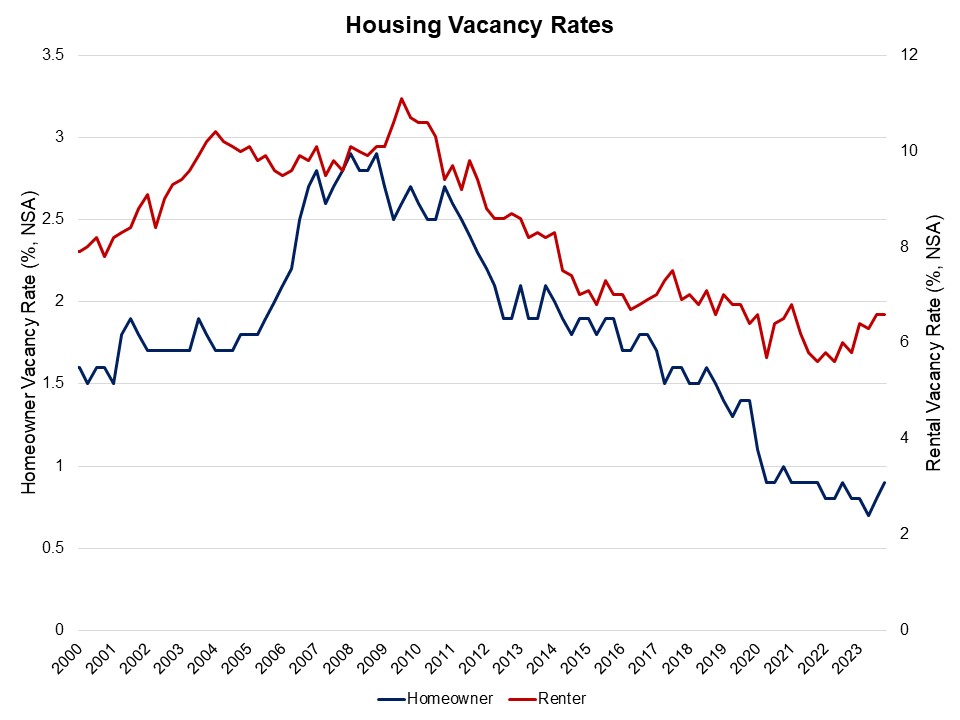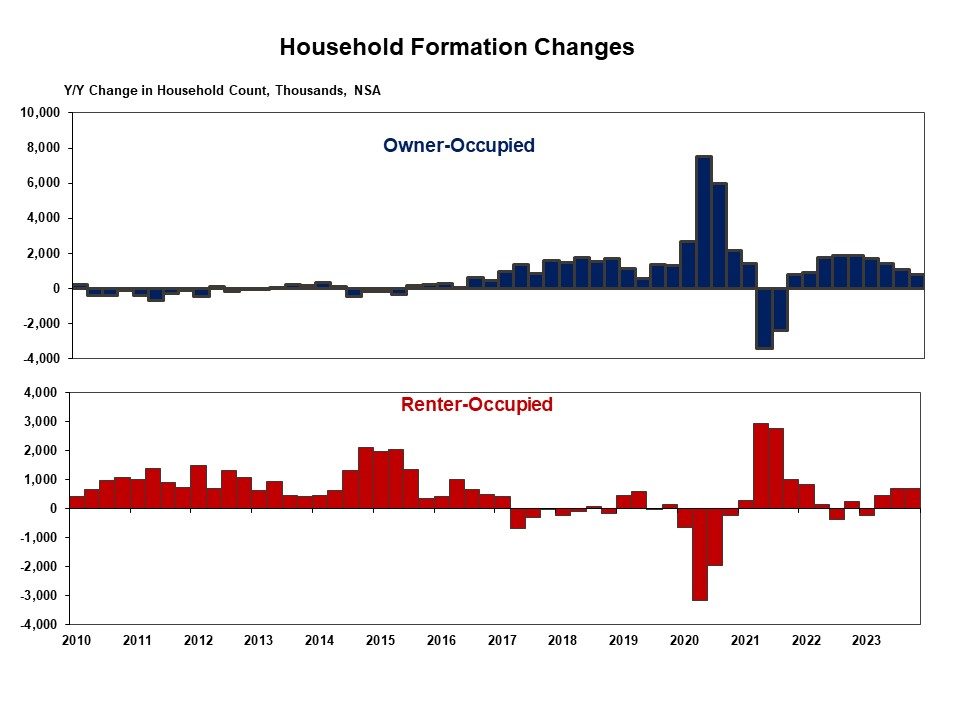The Census Bureau’s Housing Vacancy Survey (CPS/HVS) reported the U.S. homeownership rate declined to 65.7% in the last quarter of 2023, amid persistently tight housing supply and elevated mortgage interest rates. This is 0.3 percentage points lower from the third quarter reading (66%). Compared to the peak of 69.2% in 2004, the homeownership rate is 3.5 percentage points lower and remains below the 25-year average rate of 66.4% amid a multidecade low for housing affordability conditions.
The homeownership rate for householders aged less than 35 decreased to 38.1% in the fourth quarter of 2023, as affordability is declining for first-time homebuyers amidst elevated mortgage interest rates and tight housing supply. This age group, particularly sensitive to mortgage rates and the inventory of entry-level homes, saw the largest decline among all age categories.
The national rental vacancy rate stayed at 6.6%, and the homeowner vacancy rate inched up to 0.9% from 0.8%. The homeowner vacancy rate is still hovering near the lowest rate in the survey’s 67-year history (0.7%).
The homeownership rates of adults in all age groups decreased over the last year, except those aged 55-64 and 65 years and over. The homeownership rates among householders aged less than 35 experienced a 0.6 percentage point decrease, from 38.7% to 38.1%, followed by the 45-54 age group with a 0.3 percentage point decrease from 70.6% to 70.3%. Next, were households aged 35-44, who experienced a modest 0.2 percentage point decline. However, homeownership rates of householders aged 55-64 showed an increase of 0.3 percentage points.
The housing stock-based HVS revealed that the count of total households increased to 131.2 million in the fourth quarter of 2023 from 129.7 million a year ago. The gains are largely due to modest gains in owner household formation (772,000 increase), while renter households increased 694,000.
Discover more from Eye On Housing
Subscribe to get the latest posts sent to your email.




